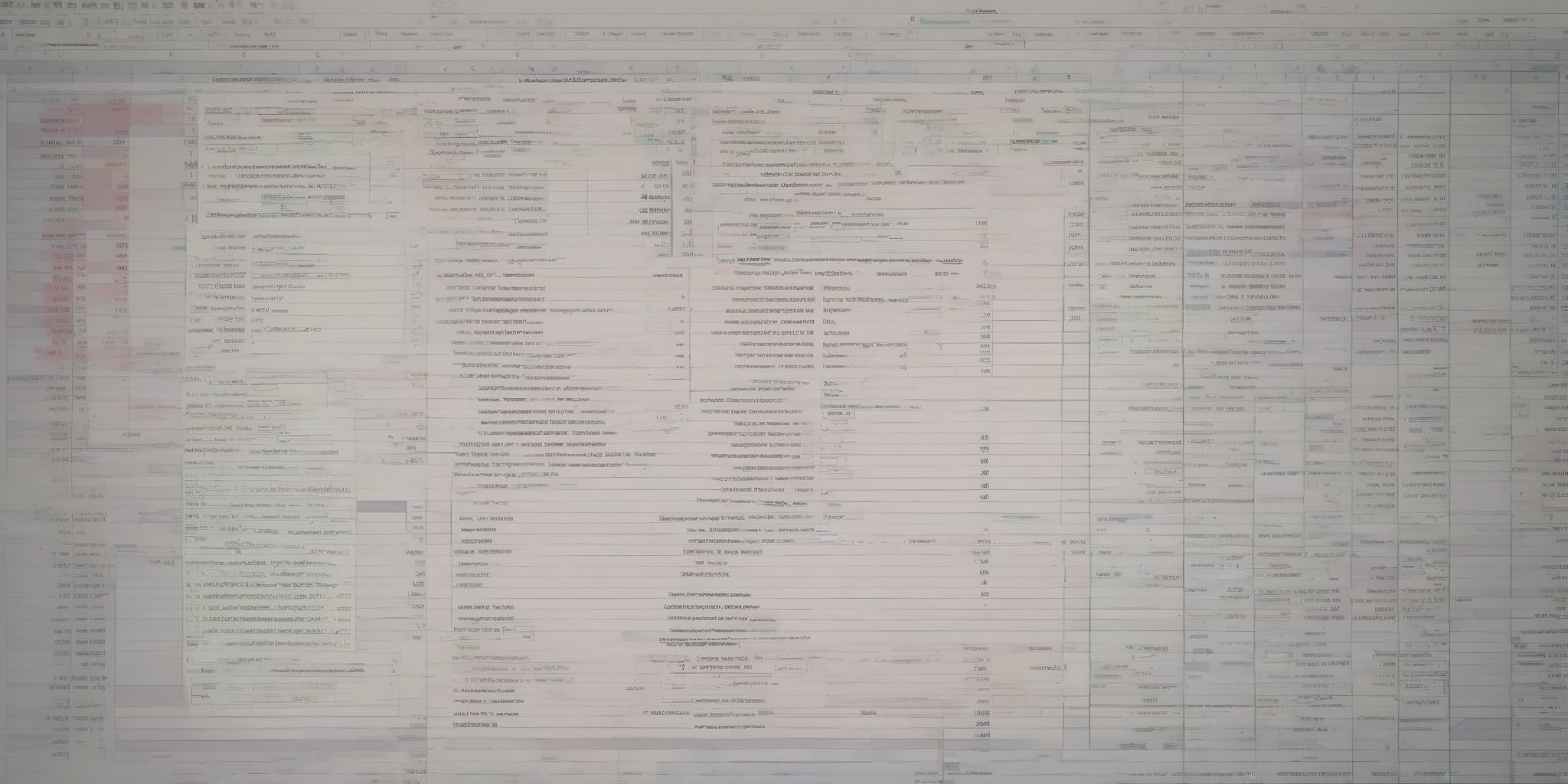What is a Limit Order?
Stock trades on the market involve a tool called a limit order. It lets you set a price to buy or sell stock. This helps you control your investments and maybe save money. Let's learn more about limit orders and how they can guide you in the stock market.
Defining a Limit Order
Understanding Order Types
Limit orders are a type of order used by investors to buy or sell stocks at a specific price.
This order type allows investors to have control over the price at which their trade is completed.
For a limit order to buy, the investor specifies the maximum price they are willing to pay, while for a limit order to sell, they set the minimum price they are willing to accept.
One benefit of limit orders is that they offer more certainty compared to market orders, where trades are executed at the current market price.
Limit orders provide investors with more control over trade execution, ensuring they buy or sell at their desired price.
Additionally, limit orders can help investors avoid sudden price changes by only triggering the trade when the stock reaches a specified price, which is helpful during times of rapid stock price fluctuations.
Understanding limit orders and their advantages can empower investors to make better decisions when trading securities.
Key Features of Limit Orders
Limit orders are a type of stock order. They let you buy or sell at a set price. This is different from market orders, which buy or sell at the current price.
With limit orders, you pick the price you want. When the order is filled depends on the timing. For example, a buy limit order is only done if the stock price hits or drops below your set price.
Using limit orders has risks. Your order might not fill if the price doesn't reach your set level. This could mean you miss chances to invest.
In turbulent trading times, limit orders might not fill or only fill in part. This can be frustrating.
To trade successfully in U.S. markets, knowing these factors is important.
Key Differences Between Limit and Market Orders
Limit orders and market orders have different execution prices.
A limit order lets an investor choose a specific price to buy or sell a stock. The trade will only happen at the set limit price or better.
On the other hand, a market order is executed at the current market price. This might result in a slightly different price due to market changes.
When deciding between these orders, investors should think about factors like the stock's current price, trading hours, order type, and desired execution price.
By analyzing these factors, investors can make smart choices. This could involve using a limit order for a specific price or a market order for immediate execution.
Understanding how each order type works is crucial for optimizing investment strategies in the U.S. securities market.
How Limit Orders Work
Placing a Limit Order
Placing a limit order involves a few steps to trade a stock at a set price.
- Investors provide the order type (buy or sell), the number of shares, the specified price (limit price), and the valid timeframe.
- Limit orders help investors get their desired price by setting a price they are okay with for buying or selling a security.
- This order type lets investors avoid the uncertainty of market orders, which happen at the current market price.
- By setting a limit price, investors control the price of their trade.
- Factors like last trade price, security price level, trendline, or channel can affect the trading choice.
- With a limit order, investors can benefit from valid quotes during U.S. securities trading hours and prevent partial fills common with market orders.
- It guarantees that their trades happen at the specific price they want.
Timing of Limit Orders
The timing of a limit order is very important to get the desired price. Factors like the current stock price, market trends, and trading hours are crucial to consider when deciding when to place a limit order.
Traders should think about the limit price (the target price) and the trigger point (when the order starts) when placing a limit order. By placing limit orders strategically during valid trading hours and at the right price levels that match market conditions, traders can improve the chances of their orders getting filled at the target price.
To reduce risks, traders can set stop prices or stop-limit orders. These can automatically sell a security once it hits a specific price. Understanding these factors can help traders optimize their trading strategies and make smart decisions to reach their investment goals in the U.S. securities market.
Benefits of Using Limit Orders
Reducing Risk of Unexpected Lower Price
Investors can reduce the risk of unexpected lower prices by using limit orders. They do this by setting a specific price to buy or sell a stock.
With a limit order, the trade only happens at the set price or better. This control helps avoid sudden price drops and gives investors more say in how their trades are executed.
Investors can also use stop orders or stop-limit orders for further risk management.
A stop order turns into a market order to buy or sell when the stop price is reached. A stop-limit order combines stop order and limit order features to trade at a set price or better.
Understanding these strategies and order types during U.S. securities market hours can safeguard investors' positions from unexpected price swings in the stock market.
Avoiding Risk Reversal
Traders can use strategies to avoid risk reversal with limit orders in trading.
One way is to set a stop price for a sell order or a buy limit price for a buy order.
This helps establish the maximum or minimum price for trade execution, preventing unfavorable prices.
Another tactic is using stop-limit orders, which ensure execution at a specific price or better by combining stop and limit order features.
To further manage risks, traders should stay informed about market trends, trading hours, and factors impacting stock prices for informed decision-making.
Knowing the last trade price, valid quotes, and price levels within trendlines or channels can aid in making strategic decisions to safeguard investments.
Understanding different order types and their execution helps traders navigate the U.S. securities market confidently, reducing the risk of reversal.
Potential Risks of Limit Orders
Potential Price Gaps
Price gaps can have a big impact on limit orders. They can lead to unexpected results for investors. Factors like quick changes in stock price, high trading volumes, and volatile markets can cause these gaps. This makes it important for investors to understand the risks.
To manage this risk, investors can use a stop order with a limit price. This sets a price where the trade should happen. It ensures that orders are executed at a specific price or better, reducing the impact of price gaps. Investors can also use a stop-limit order for more control over their trades. By doing these things and staying updated on market trends, investors can handle price gaps and trade U.S. securities smartly.
Risk of Order Not Being Filled
A limit order may not get filled for different reasons. One reason is the limit price set by the investor, which might not match the current market price. Trading hours and volume can also affect order execution. To reduce the risk of an order not being filled, investors can use stop-limit orders, which activate a trade at a specific price level. Sometimes, only part of the order is filled at the desired price, adding complexity.
Stay updated on stock prices and use stop-limit orders wisely to manage risks when using limit orders in the U.S. Securities market.
Using Stop-Limit Orders Alongside Limit Orders
By using stop-limit orders and limit orders together, traders have more control over their trading strategies.
A stop-limit order lets traders set a stop price. When that price is hit, it triggers a limit order to buy or sell a stock at a specific price.
This approach helps traders lock in a desired price for a trade and safeguards against unfavorable price movements.
These two order types combined help traders manage risks by establishing clear trade parameters.
For instance, in a volatile market, a trader might place a limit order to sell at a set price and set a stop price to activate that sell order if the stock price hits a certain level.
This setup allows traders to benefit from positive price changes and restrict potential losses.
When deciding on the right mix of stop-limit orders and limit orders for their trading plans, traders should consider factors like investment timeframe, market conditions, and their risk tolerance.
Understanding how these order types function together enables traders to make better choices to safeguard their positions and improve their trading results in the U.S. securities market.
Market Orders vs. Limit Orders
Understanding the Difference
Market orders and limit orders are two types of orders used in stock trading.
- A market order is an order to buy or sell a stock at the current market price.
- A limit order is an order to buy or sell a stock at a specific price or better.
Understanding the difference between these two order types is important for investors.
- With market orders, the focus is on speedy execution at the prevailing market price.
- Limit orders allow investors to set the price at which they want to buy or sell a stock, giving them more control over the execution price.
This knowledge can greatly impact an investor's trading strategy by helping them take advantage of specific price levels or market trends.
- Using limit orders is especially helpful in volatile markets, ensuring investors buy or sell at a specific price without worrying about sudden price changes.
By understanding the distinctions between market orders and limit orders, investors can make better decisions to enhance their trades in the U.S. securities market.
Over to you
A limit order is a type of order used in trading. Investors use it to specify the maximum price when buying or the minimum price when selling a security.
With a limit order, investors control the trade's execution price. This ensures they don't pay more or receive less than they want.
Limit orders help manage risk and achieve desired outcomes in financial markets.
FAQ
What is a limit order?
A limit order is an order placed to buy or sell a stock at a specified price or better. For example, if a stock is currently trading at $50 and you set a limit order to buy at $45, the order will only be executed if the stock price reaches $45 or lower.
How does a limit order work?
A limit order is an order to buy or sell a stock at a specific price or better. For example, setting a limit order to buy at $50 when the current price is $48. If the stock reaches $50, the order will execute at that price.
What are the advantages of using a limit order?
The advantages of using a limit order include control over the price at which the trade is executed, potentially avoiding slippage, and protection against unexpected market fluctuations. For example, setting a limit order to buy a stock at a lower price than the current market price can help you secure a better deal.
Can a limit order be canceled or changed?
Yes, a limit order can be canceled or changed before it is executed. For example, if the market conditions change, you may choose to cancel a limit order or adjust the price or quantity of the order.
Are there any risks associated with using a limit order?
Yes, one risk of using a limit order is that the trade may not be executed if the stock price doesn't reach your specified limit. Another risk is missing out on quick price changes if the limit order is not flexible.


